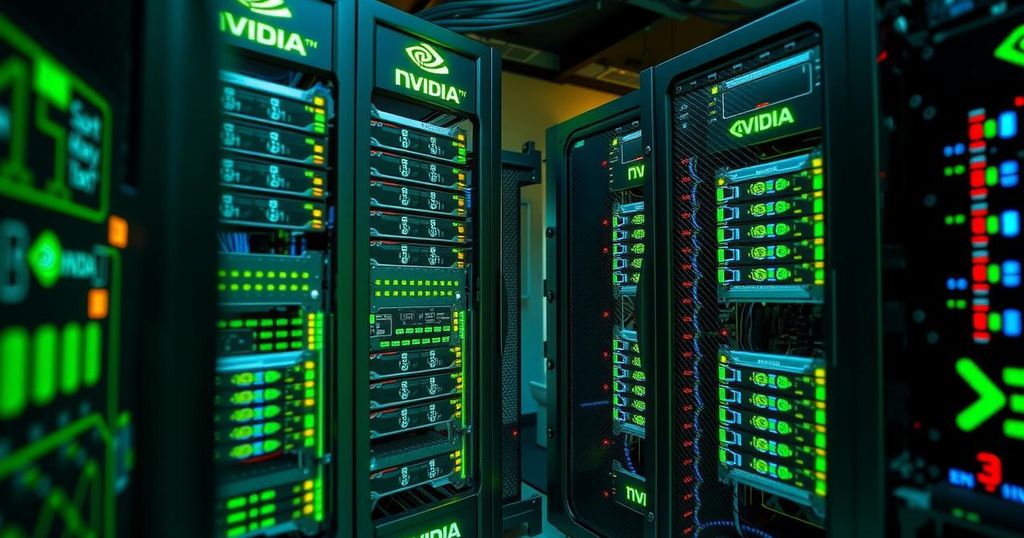NVIDIA’s technologies power 384 systems on the latest TOP500 supercomputer list, showcasing its leadership in AI and computing advancements. Announcements from SC24 highlight new CUDA-X libraries and enhancements to quantum computing platforms. Mixed precision and AI are becoming essential tools in scientific research. NVIDIA prioritizes efficiency, with its systems leading in energy performance, and its efforts have been recognized with multiple awards, underscoring the importance of collaboration in future innovations.
Since the introduction of CUDA in 2006, NVIDIA has dominated the field of AI and accelerated computing, a trend reaffirmed by the latest TOP500 list showcasing the world’s mightiest supercomputers. This year, 384 systems leverage NVIDIA technology, with 87% of the 53 newcomers being accelerated—predominantly powered by the innovative Hopper GPUs, facilitating breakthroughs in critical areas like drug discovery, climate modeling, and quantum simulations. NVIDIA’s impact extends beyond mere processing speed, introducing powerful solutions tailored to specific applications that enhance performance without sacrificing efficiency.
During SC24, NVIDIA unveiled cuPyNumeric, a game-changing CUDA-X library that allows over 5 million developers to scale their applications effortlessly on versatile computing clusters, all without altering their existing Python scripts. Additionally, impressive upgrades to NVIDIA’s CUDA-Q platform bolster quantum research, enabling simulations of quantum devices previously deemed computationally unfeasible. This year marks NVIDIA’s 20th consecutive year of accolades, with multiple HPCwire Readers’ and Editors’ Choice awards, solidifying its reputation in the supercomputing realm.
The fusion of mixed precision and AI has ushered in a new epoch in scientific discovery, empowering researchers with unparalleled speed, efficiency, and adaptability. Notable projects presented at SC24 demonstrated these innovative techniques significantly enhancing genomics and protein design. David Keyes from King Abdullah University of Science and Technology showcased a striking advance using 0.8 exaflops of mixed precision to establish critical links between genes and diseases. Similarly, Arvind Ramanathan of Argonne National Laboratory utilized 3 exaflops of AI performance to expedite protein engineering.
Moreover, NVIDIA offers BioNeMo, an open-source framework designed to accelerate AI-driven drug discovery, enabling researchers to create and customize models for life-saving therapies swiftly. The pervasive adoption of AI and mixed-precision computing among TOP500 systems demonstrates a fundamental shift towards prioritizing these technologies, amassing a remarkable 249 exaflops of AI performance to propel innovation across various sectors.
NVIDIA also prioritizes sustainability within computational advancement. The Green500 list reveals that eight of the top ten most energy-efficient supercomputers integrate NVIDIA’s accelerated computing systems. For instance, the JEDI system at EuroHPC/FZJ exhibits a stunning performance of 72.7 gigaflops per watt, embodying an ideal balance between power and sustainability. Furthermore, NVIDIA introduced new microservices for its Earth-2 platform, enhancing climate forecasting 500 times faster and amplifying efforts to combat climate change.
Recognition of NVIDIA’s impact extends beyond technology; the recent awards reflect the collective efforts of engineers, developers, researchers, and partners contributing to this scientific renaissance. Key accolades range from Best AI Product to Top New Technology, celebrating innovations like the Grace Hopper Superchip and the Quantum-X800. This level of recognition affirms NVIDIA’s pivotal role in advancing not just performance, but collaborative scientific efforts.
In summary, NVIDIA continues to redefine the frontiers of supercomputing, seamlessly integrating state-of-the-art AI technologies and mixed-precision computing to foster breakthroughs in science while championing sustainable practices. As they pave the way for future discoveries, the collaborations within the supercomputing community highlight the remarkable trajectory of progress, promising a brighter horizon for technological innovation.
NVIDIA emerged as a powerhouse in accelerated computing after launching CUDA, a parallel computing platform and application programming interface that vastly improves computational efficiency. The latest developments underscore NVIDIA’s ambition to bolster AI applications and supercomputing while advocating for sustainability. The TOP500 list—an authoritative ranking of the world’s most powerful supercomputers—offers a glimpse into NVIDIA’s revolutionary contributions. Their recent achievements showcase not just speed but a fundamental shift towards leveraging AI and mixed precision for breakthroughs in fields such as genomics, drug discovery, and climate modeling.
NVIDIA is at the forefront of a technological revolution, driving advancements across supercomputing by integrating AI and mixed-precision computing, which foster rapid innovations in science and technology. Their commitment to sustainability is evident through the remarkable efficiency of their systems, highlighting the balance between performance and ecological responsibility. With strong recognition from industry peers and constant innovation, NVIDIA is poised to continue shaping the future of supercomputing, making significant impacts across diverse fields.
Original Source: blogs.nvidia.com



